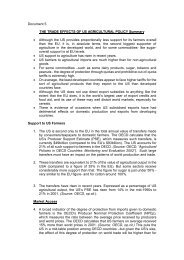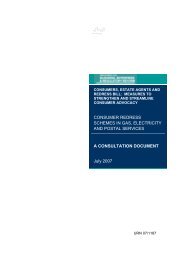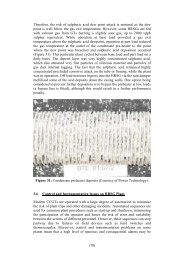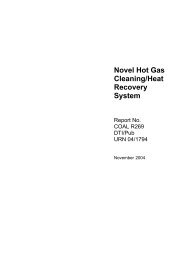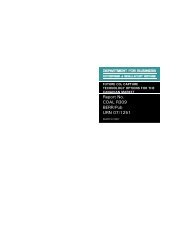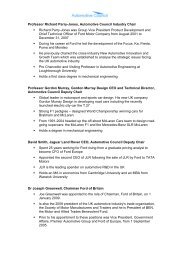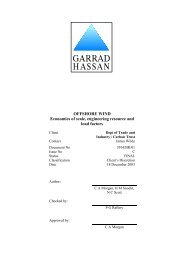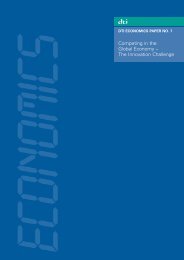Coal Fired Power Plant Operations - DTI Home Page
Coal Fired Power Plant Operations - DTI Home Page
Coal Fired Power Plant Operations - DTI Home Page
Create successful ePaper yourself
Turn your PDF publications into a flip-book with our unique Google optimized e-Paper software.
10 PT/03/BD1076/R Revision 2<br />
temperature is controlled by the use of the left and right hand upper attemperating sprays.<br />
The set point for this loop is normally 540ºC and can be set by the operator.<br />
Reheat temperature at Hammond 4 is controlled through modulation of the bypass dampers<br />
in the furnace backpass. The set point for this loop is normally 540ºC and can be set by the<br />
operator. Although configured in the DCS, reheat attemperating spray as a reheat<br />
temperature control method is not currently used at Hammond 4 due to its known adverse<br />
effect upon efficiency of plant operation.<br />
6.2 Pressure Control<br />
Main steam flow and hence generated load is effectively controlled by setting the steam<br />
pressure. This can be achieved by either (1) throttling the steam flow by modulating the<br />
governor (or throttle) valves of the turbine while maintaining constant upstream<br />
conditions; (2) varying the steam pressure ahead of the turbine; or (3) some combination of<br />
the above. For the latter two, the pressure set point is adjusted so that the throttle valves<br />
operate at valve points, i.e. where no valve is partially open.<br />
6.3 Constant Pressure Operation<br />
At Hammond, the Unit Master Station (UMS), when in automatic mode, will always try to<br />
control turbine throttle pressure to set point (at Hammond 4, normally set to 2400 PSIG).<br />
The UMS will normally control throttle pressure by adjusting the fuel firing rate (boiler<br />
follow mode) or, in unusual circumstances, by modulating the turbine governor valves<br />
(turbine follow mode).<br />
6.4 Sliding Pressure Operation<br />
In sliding pressure operation, the throttle pressure set point (and therefore throttle pressure)<br />
is varied to achieve load demand while the turbine throttle valves are controlled to wideopen<br />
position (VWO - Valves Wide Open). The primary advantages of this mode of<br />
operation are:<br />
•<br />
•<br />
•<br />
Reduced throttling losses from the governor valves increases turbine efficiency.<br />
Boiler feedpump power consumption is reduced at lower loads.<br />
Higher superheat temperatures at reduced loads improves turbine cycle efficiency.<br />
A disadvantage of sliding pressure operation is slower response time for the unit.<br />
At Hammond 4, the DCS has been configured to allow sliding pressure operation but<br />
testing has not been conducted to develop the necessary set point curves and it is not<br />
utilised.<br />
6.5 Turbine Optimisation



